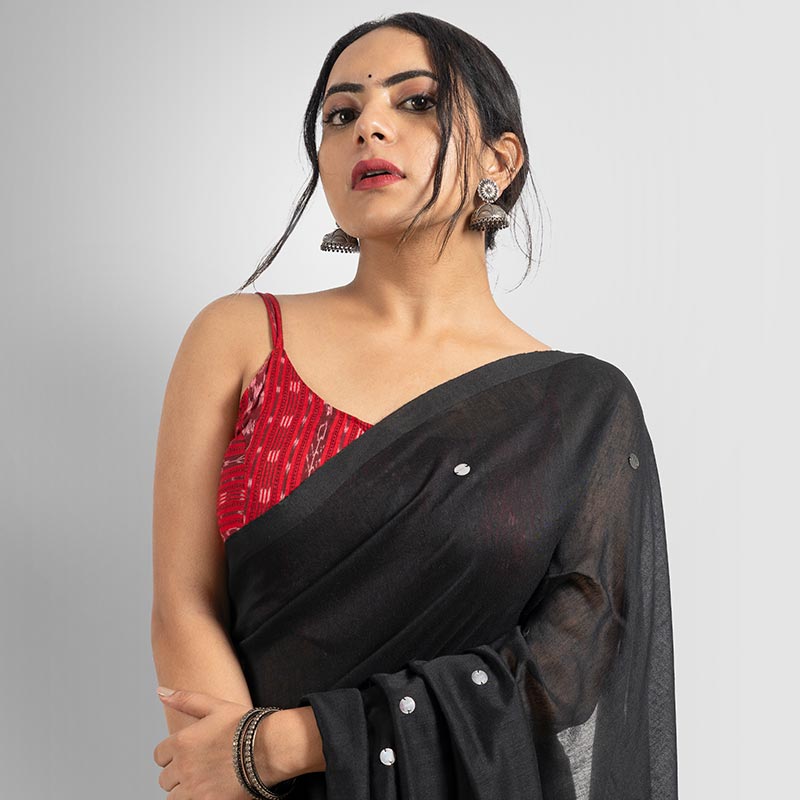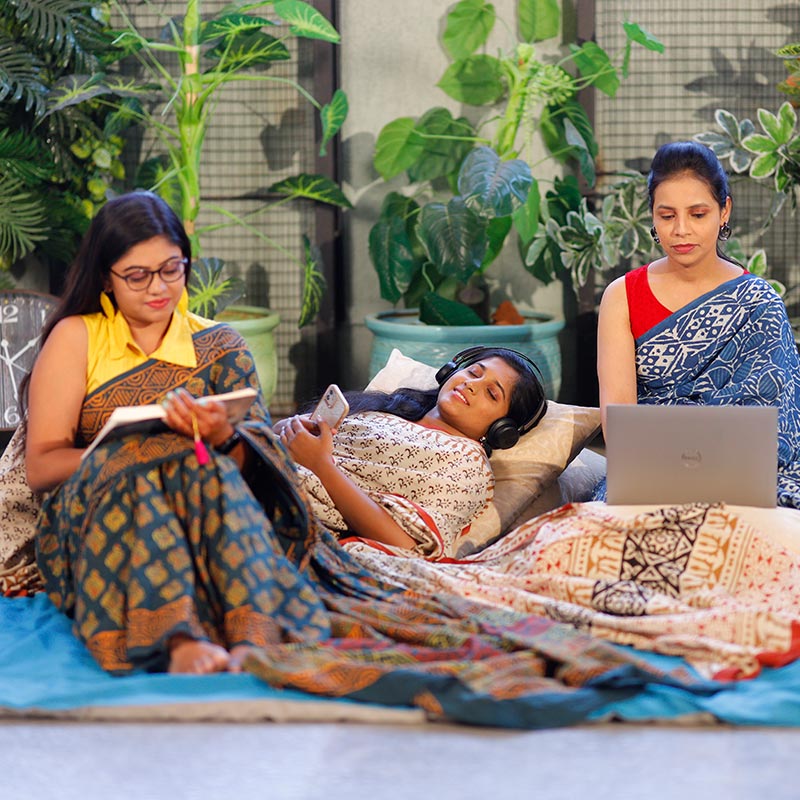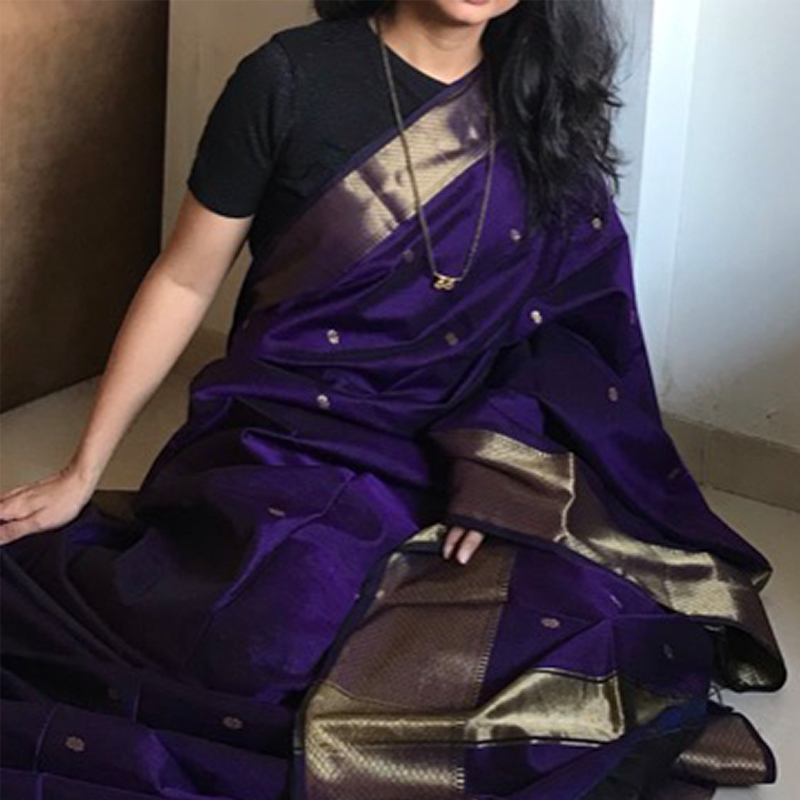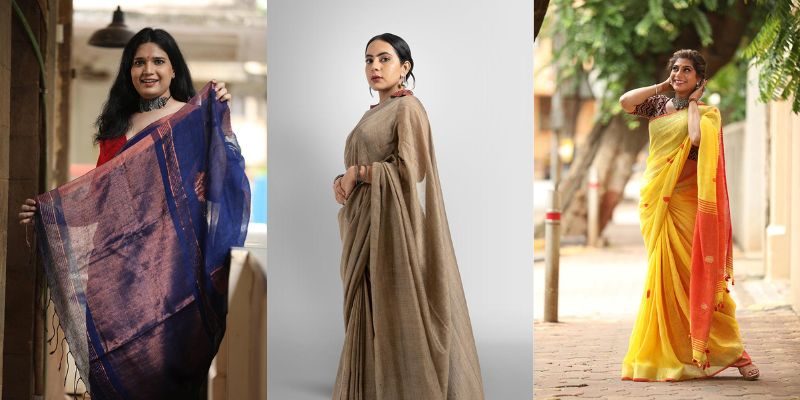Buying sarees and myths surrounding it
Originating from the ancient Indus Valley Civilization, the saree symbolizes more than traditional attire; it embodies the diversity and history of Indian culture. Every region of India adds to the saree’s allure with unique weaves, fabrics, and designs, making it a versatile emblem of identity and tradition.
As the world becomes more interconnected, the saree has seamlessly woven modernity into its fabric, transforming contemporary designs and materials while preserving its historical essence. Today’s designers blend traditional elements with modern aesthetics to broaden the saree’s appeal, engaging not only the younger generation but also international fashion circles. Additionally, fashion sustainability highlights the significance of handloom sarees, championing traditional craftsmanship and eco-friendly practices.
Myths Surrounding Buying Sarees
Myth 1: Sarees are Impractical for Daily Activities.
Many believe that sarees are impractical for everyday tasks and can hinder mobility. This myth likely arises from experiences with heavily embellished or formal sarees. However, everyday sarees made from lightweight fabrics like cotton, linen, and handloom weaves are quite comfortable and flexible. Many Indian women wear sarees daily, skillfully managing their tasks, from professional duties to household chores.
Myth 2: Only Older Women Wear Sarees
There's a misconception that sarees are suited only for older women, making them an unattractive option for the younger generation. This couldn't be further from the truth. Young women are increasingly embracing sarees. Thanks to contemporary designs, vibrant prints, and innovative draping styles that cater to youthful tastes. Fashion-forward sarees & accessories have made the garment a popular choice among all age groups.
Myth 3: You Need a Perfect Figure to Look Good in a Saree
Some believe that sarees only look good on women with a certain body type, discouraging many from trying this versatile garment. The beauty of the saree lies in its ability to be draped in ways that can flatter any figure. With the right choice of fabric, pattern, and draping style, a saree can accentuate the wearer's best features, regardless of their body shape or size.
Myth 4: Sarees Are Too Expensive
While there are certainly luxury sarees available at high price points, sarees come in a wide range of prices, making them accessible to people with varying budgets. Cotton, synthetic, and less ornate sarees can be quite affordable. Additionally, the durability and timeless nature of a good saree offer value over time, often making them more cost-effective than other fashion choices that may go out of style quickly.
Myth 5: Draping a Saree is Too Time-Consuming
Many assume that draping a saree is a lengthy process, but with practice, it can be done quickly and efficiently. Ready-to-wear sarees and pre-pleated options are also available for those seeking convenience without sacrificing the elegance of a saree.
Myth 6: Sarees Are Only for Traditional Events
While sarees are a popular choice for traditional ceremonies and weddings, their use is not limited to such occasions. Casual, formal, and fusion sarees are suitable for a wide range of events, from office meetings to dinner parties. The key lies in selecting the right fabric, colour, and design to suit the occasion.
Myth 7: Maintenance of Sarees is Difficult
Another myth is that sarees are high-maintenance and difficult to care for, deterring some from incorporating them into their regular wardrobe. While it's true that certain luxurious sarees, like heavily embroidered or pure silk ones, require careful handling, many everyday sarees are quite easy to maintain. Cotton, georgette, and synthetic sarees, for example, can often be machine-washed and require minimal care, making them practical for regular wear.
Myth 8:Sarees Are Difficult to Accessorize With Modern Elements.
There's a misconception that sarees can only be accessorized with traditional Indian jewellery and accessories. The versatility of the saree, however, allows it to be paired with a variety of accessories, from minimalist and modern jewellery to belts, scarves, and even contemporary footwear. This adaptability makes the saree a canvas for personal expression, blending traditional and modern aesthetics seamlessly.
Myth 9: Sarees Are Exclusively Worn by Women
While sarees have traditionally been associated with women's attire in India, the notion that they are only for women is a limited perspective. The evolving fashion landscape has seen a rise in gender-fluid and androgynous fashion choices, with sarees being embraced by people regardless of gender. This shift reflects a broader cultural movement towards inclusivity and the breaking down of gender norms in fashion. The saree, with its inherent versatility and elegance, has become a symbol of this progressive change, celebrated for its ability to transcend gender boundaries and express a unique, individual style.
Conclusion
Buying sarees and exploring the myths around them reveals a beautiful blend of old and new in Indian fashion. Sarees are much more than just traditional wear; they're a symbol of lasting style that adapts over time. By clearing up myths — like the idea that sarees are hard to wear or only for special occasions — we see how versatile and welcoming sarees really are. This journey also shows us how modern trends, like new ways to drape or focusing on eco-friendly sarees, are shaping the world of sarees today. So, when we pick out a saree, we're not just choosing a piece of clothing; we're keeping a rich tradition alive, making it fresh and exciting for everyone to enjoy






